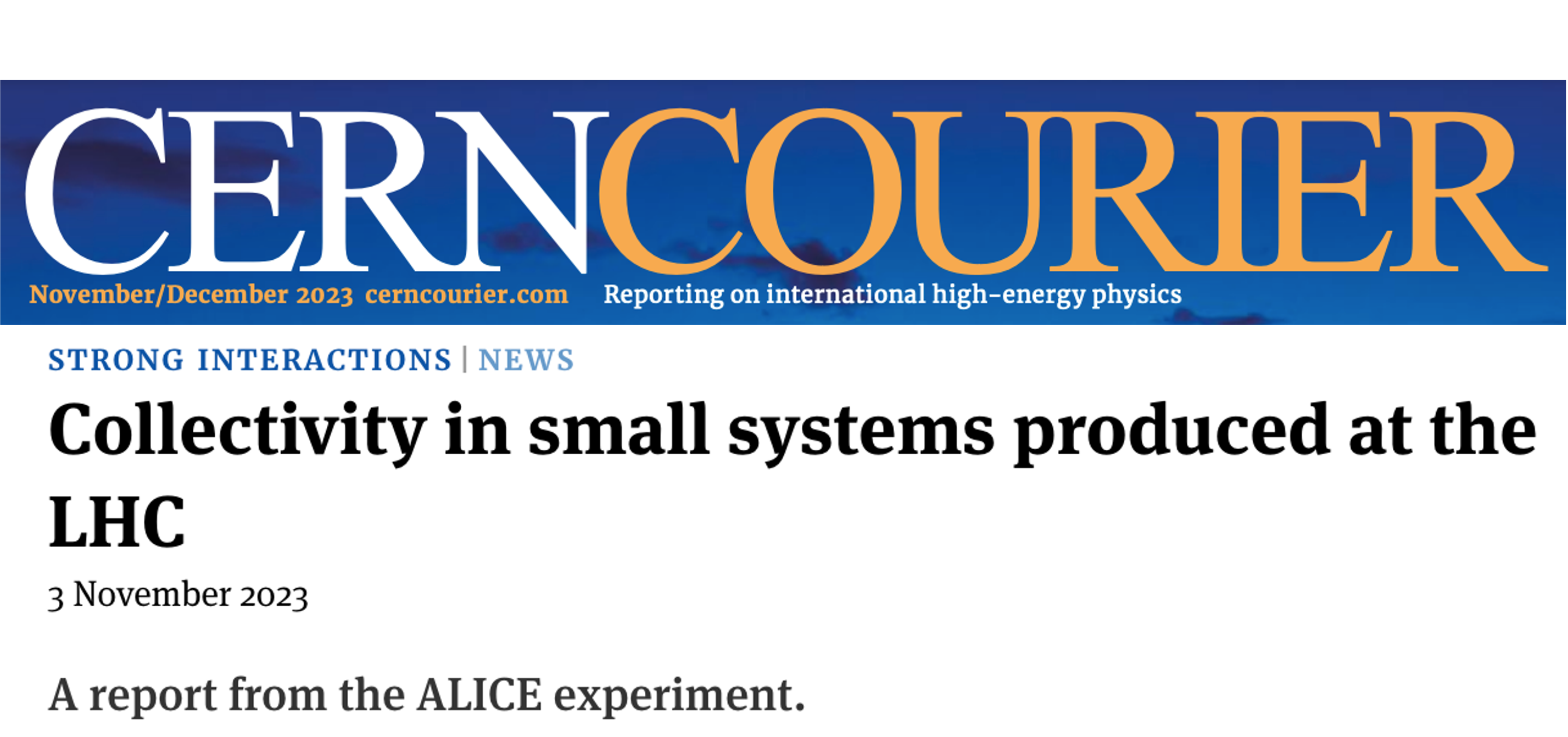

(Nov-Dec 2023)
High-energy heavy-ion collisions at the LHC exhibit strong collective flow effects in the azimuthal angle distribution of final-state particles. Since these effects are governed by the initial collision geometry of the two colliding nuclei and the hydrodynamic evolution of the collision, the study of anisotropic flow is a powerful way to characterise the production of the quark–gluon plasma (QGP) – an extreme state of matter expected to have existed in the early universe.
To their surprise, researchers on the ALICE experiment have now revealed similar flow signatures in small systems encompassing proton–proton (pp) and proton–lead (pPb) collisions, where QGP formation was previously assumed not to occur. The origin of the flow signals in small systems (and in particular whether the mechanisms behind these correlations in small systems share commonalities with heavy-ion collisions) are not yet fully understood. To better interpret these results, and thus to understand the limit of the system size that exhibits fluid-like behaviour, it is important to carefully single out possible scenarios that can mimic the effect of collective flow.
Follow on the CERN Courier link.
Further reading: ALICE Collab. 2023 arXiv: 2308.16591.
